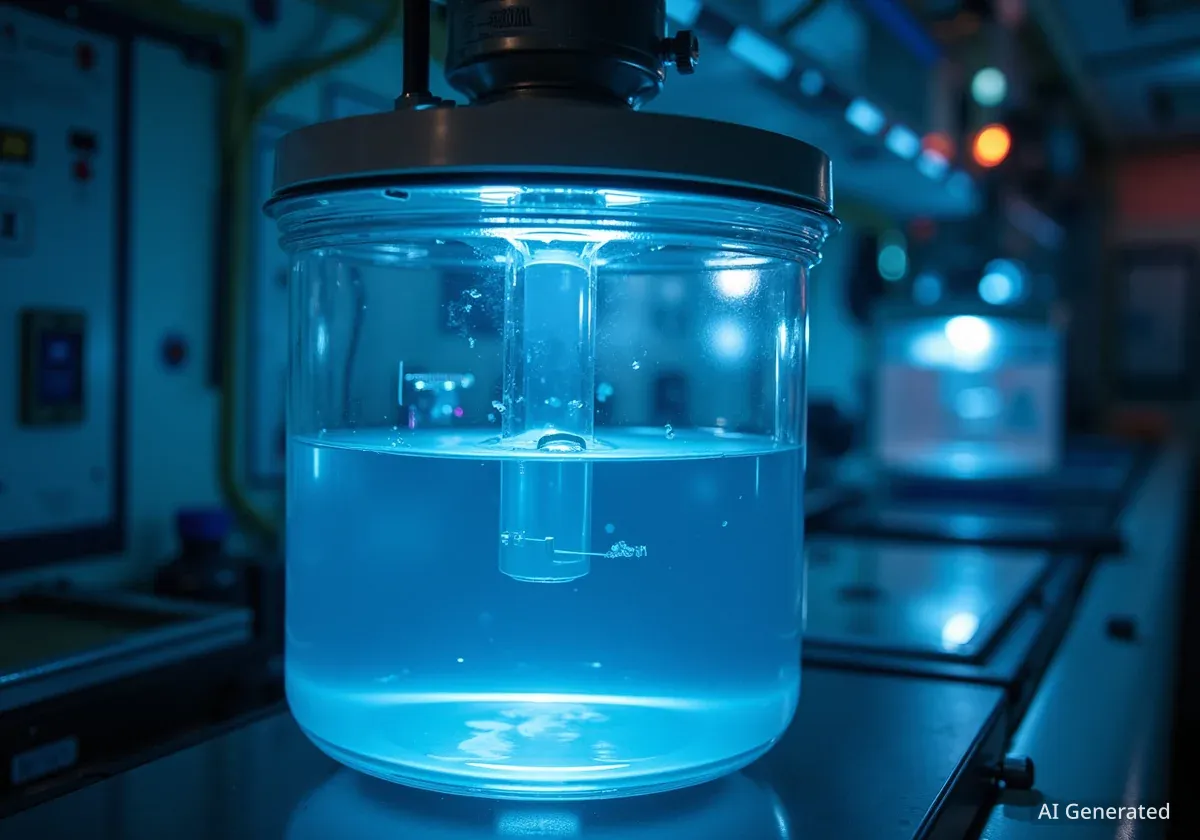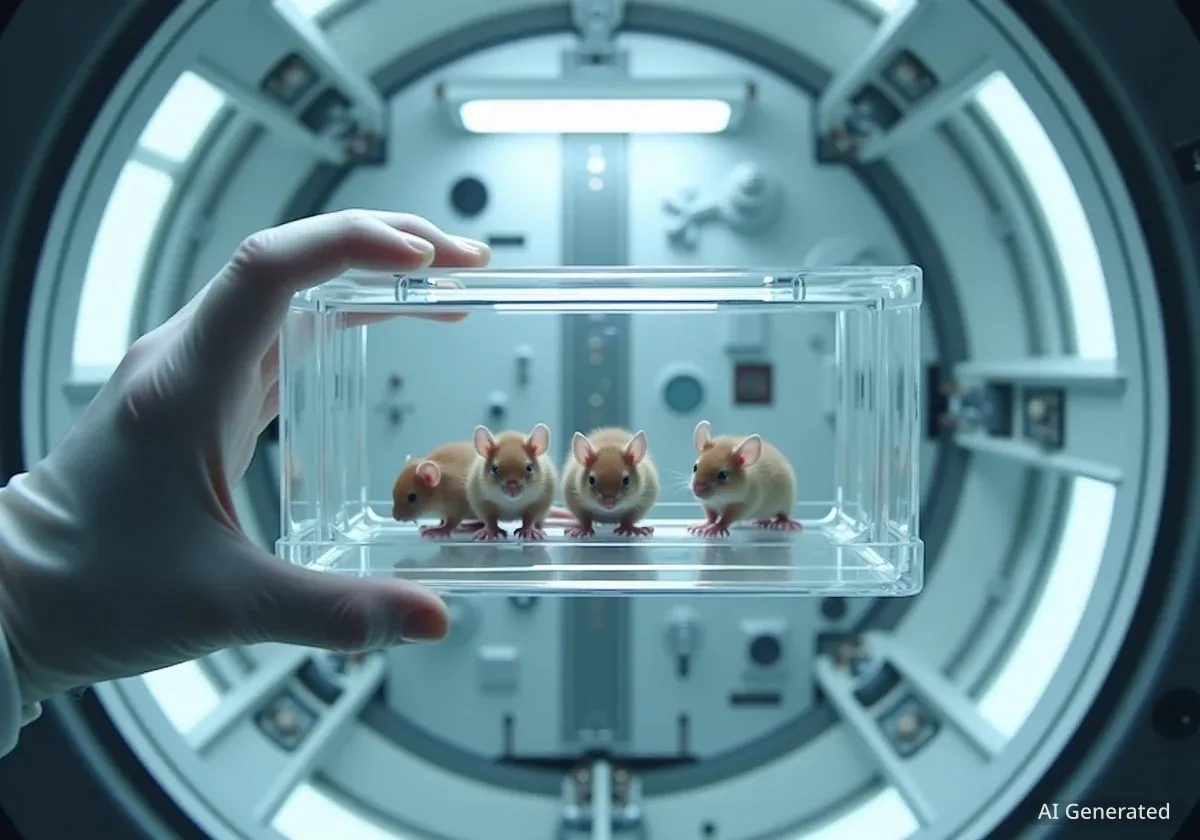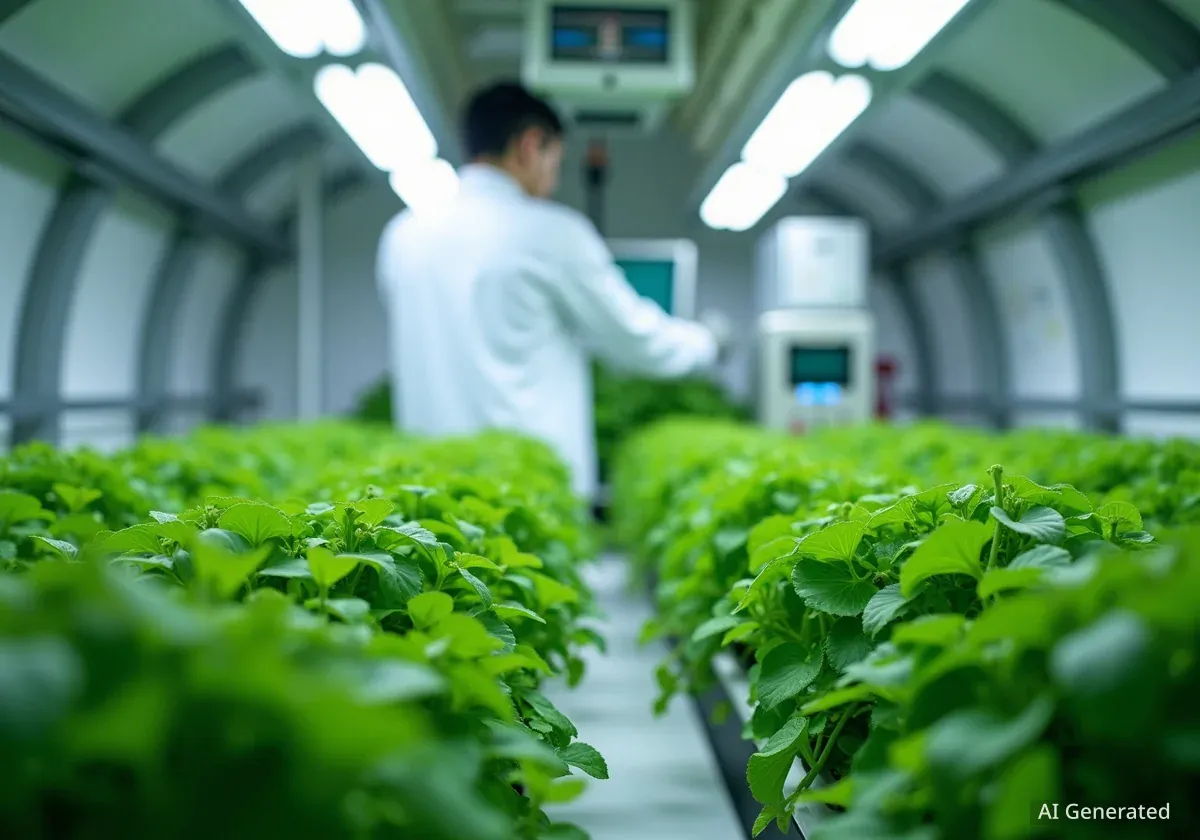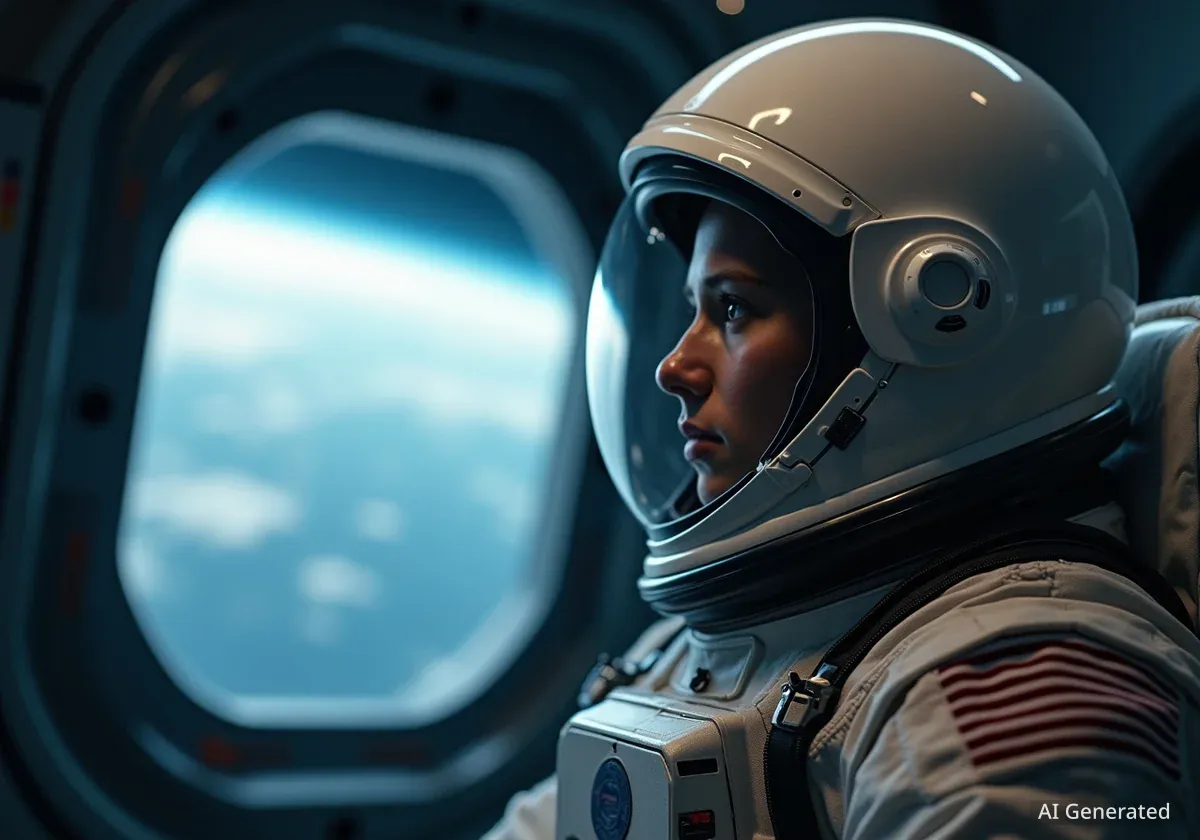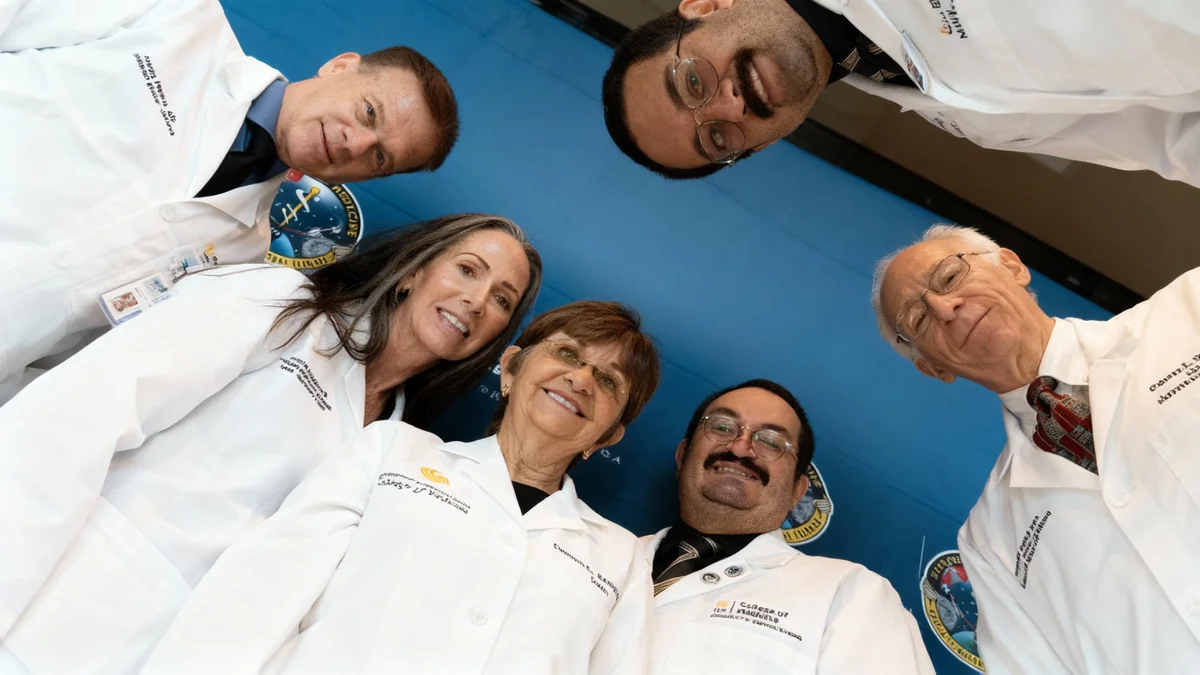An advanced experiment has been launched to the International Space Station to test a new method for combating dangerous bacterial growths known as biofilms. A multi-university team, led by researchers from Arizona State University, is investigating whether specialized ultraviolet light can prevent these slimy colonies from forming in the unique microgravity environment of space, offering a potential solution to a persistent problem for both astronauts and industries on Earth.
The experiment, named Germicidal Ultraviolet Light Biofilm Inhibition (GULBI), was delivered to the station aboard a Northrop Grumman resupply mission. It aims to provide a safer, chemical-free alternative for disinfecting water systems, which are highly susceptible to biofilm contamination.
Key Takeaways
- A new experiment called GULBI is testing UV-C light to stop biofilm growth on the International Space Station.
- Biofilms are a significant problem in space, clogging water systems and posing health risks to astronauts.
- On Earth, these bacterial colonies cause an estimated $4 trillion in damage annually through corrosion, contamination, and energy loss.
- The research uses special side-emitting optical fibers to deliver UV light directly to surfaces where bacteria grow, hoping to replace costly and heavy chemical disinfectants.
The Challenge of Biofilms in Space
Biofilms are communities of bacteria that adhere to surfaces and create a protective slimy layer. You might recognize them as the plaque on your teeth or the slick film inside a pipe. In the confined, humid environment of the ISS, they are a constant threat.
"Anywhere there is any moisture, biofilms will grow on surfaces," explained Paul Westerhoff, the Arizona State University Regents Professor leading the GULBI investigation. These growths can clog vital equipment, such as the station's water recycling systems, and potentially harbor harmful pathogens.
Past incidents on the ISS have seen biofilm accumulation clog tubing, requiring astronauts to perform difficult and time-consuming replacements. For future long-duration missions to the Moon or Mars, where resupply missions are not an option, finding a reliable method to control these bacteria is critical.
Why Biofilms are a Trillion-Dollar Problem on Earth
While critical for space travel, biofilm prevention has massive implications back on Earth. These bacterial communities are responsible for widespread issues across multiple industries. They cause corrosion in pipelines, reduce efficiency in heat exchangers, contaminate medical devices like catheters, and contribute to the growth of mold on surfaces. The economic impact is staggering, with estimates placing the annual cost of biofilm-related damage at around $4 trillion globally.
A Novel Approach Using Light
The GULBI experiment moves away from traditional chemical disinfectants. Transporting chemicals like silver or iodine to space is extremely expensive. According to Robert McLean, a professor at Texas State University and part of the research team, a single 500-milliliter bottle of disinfectant could cost up to $20,000 to launch to the ISS.
The alternative being tested is germicidal ultraviolet light, specifically UV-C, which is known to damage bacterial DNA and prevent it from repairing itself. The core of the technology is a set of thin, flexible, side-emitting optical fibers developed by H2Optic Insights, a startup company associated with Westerhoff.
These fibers act like tiny light wands, delivering the UV-C light directly along surfaces where biofilms are likely to form. This targeted approach is designed to be more efficient and less intrusive than flooding a system with chemicals.
"By studying how biofilms behave in extreme environments like microgravity, we can improve both our fundamental understanding and our ability to prevent their widespread problems here on Earth," said Westerhoff.
How the Experiment Works in Orbit
The experiment is meticulously designed to compare biofilm growth in space with control samples on Earth. The hardware, developed by BioServe Space Technologies at the University of Colorado Boulder, consists of 16 small units called BioCells.
Each BioCell contains a liquid nutrient solution, samples of the bacteria Pseudomonas aeruginosa, and small metal surfaces for the bacteria to grow on. The process unfolds over 21 days:
- Astronauts activate the experiment by inoculating the BioCells with bacteria inside the Life Science Glovebox on the ISS.
- The samples are then divided into groups. Some are exposed to continuous UV-C light, some to intermittent light, and a control group receives no light at all.
- On days 3, 9, 15, and 21, astronauts take samples, add a fixative to preserve the bacteria, and place them in cold storage.
This structured timeline will allow scientists to analyze how the UV light affects the amount and structure of the biofilm that forms in microgravity. Previous research has shown that biofilms grown in space can have significantly different structures than those on Earth, making this investigation particularly valuable.
Decades of Space Research Experience
The ASU team brings over 20 years of experience in space biomedical research to the GULBI project. Professor Cheryl Nickerson's team, a key partner in the study, has flown 12 previous life sciences experiments to the ISS, focusing on astronaut health and spacecraft sustainability.
Future Implications for Space and Earth
If successful, the GULBI experiment could lead to a new generation of self-disinfecting systems for spacecraft. UV-C technology could be integrated directly into water tanks, pipes, and life support equipment, reducing the need for astronauts to perform manual cleaning and rely on chemical supplies.
Westerhoff's team is already working with NASA on a follow-up application, embedding a mesh of the optical fibers into a water bellows tank designed for the space station. This represents a direct step toward practical implementation.
The benefits extend far beyond orbit. The same technology could be adapted for use on Earth in a variety of settings:
- Hospitals: Preventing biofilm formation on medical implants and equipment.
- Water Treatment: Keeping municipal water pipes clean and reducing the need for chlorine.
- Maritime Industry: Reducing biofouling on ship hulls, which currently accounts for over 10% of their fuel costs.
By testing this technology in the unforgiving environment of space, researchers hope to refine a solution that can make water systems safer and more efficient for everyone, both in orbit and on the ground.

